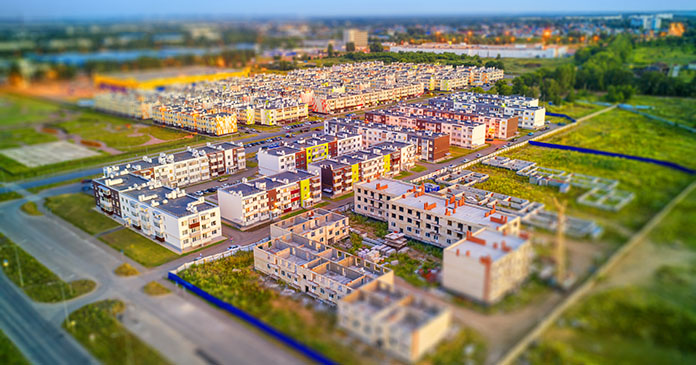Evidence of a suburban shift for consumer home buying preferences as a result of the COVID-19 pandemic can be found in the second quarter National Association of Home Builders (NAHB) Home Building Geography Index (HBGI).
“The increasing demand for construction in more suburban neighborhoods is being driven in large part by the coronavirus outbreak,” said NAHB Chairman Chuck Fowke, a custom home builder from Tampa, Fla. “The growing trend for working at home is enabling more families to choose to live in lower cost, lower density communities. Moreover, persistent housing affordability challenges exacerbated by soaring lumber prices that have added $16,000 to the price of a single-family home since mid-April are adding to the need to find affordable housing in lower cost markets.”
“The county-level second quarter HBGI data shows relative growth in lower density markets that represent half of all single-family construction,” said NAHB Chief Economist Robert Dietz. “We saw initial evidence of this trend in the first quarter, and in recent months these markets have registered faster growth for both single-family and multifamily building, as the demand for new construction shifted to more suburban and exurban communities.”
The HBGI is a quarterly measurement of building conditions across the country and uses county-level information about single- and multifamily permits to gauge housing construction growth in various urban and rural regions.
Small metro suburbs accounted for the fastest growing geographical areas for single-family construction during the second quarter, up 10.6 percent on a four-quarter moving average basis. This was followed by small towns (9.3 percent), small metro core areas (7.5 percent) and exurbs (5.6 percent).
Other second quarter HBGI findings show:
- In the second quarter, single-family housing starts fell by 24 percent on quarterly basis. Of the seven regional geographies, only small metro area suburbs posted a year-over-year gain in this quarter, while the others registered declines, the biggest of which occurred in large metro core areas.
- The market share for single-family construction in low density areas (small metro core and suburbs, small towns and rural markets) increased from 47.5 percent a year ago to 48.4 percent.
- The fastest growing geographies for apartment construction in the second quarter were found in the exurbs, small metro suburbs and rural areas.
- The market share for multifamily construction in low density areas (exurban areas of large metro markets, small metro core and suburbs, small towns and rural markets) increased from 32.9 percent a year ago to 34 percent.
Although the year-to-year changes in single- and multifamily market shares in low density areas are seemingly small, changes in market share are usually slow to develop. This makes a one-percentage point year-over-year gain noteworthy, when compared to recent historical data.













